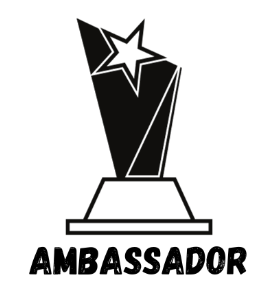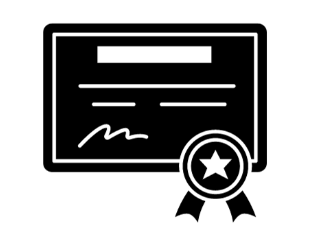
It’s great for a business advisor to suggest you discover your Unique Selling Proposition, USP. But identifying it is more complex. First, you need to discover your SWOT with an analysis and identify your ideal customers.
As a career school instructor, I helped students learn about not only the need but how to discover their USP using a discover your SWOT approach.
I remember this conversation with Michelle when I was mentoring her.
“So, have you discovered your USP yet? Something that makes your business unique?”
I noticed Michelle’s face took on a slightly glazed expression.
“Well, I’ll be the only clinic in town that uses this product,” she said with a smile.
“And what if someone else picks up that brand?”
Michelle’s smile faded.
“You’re going to need to dig deeper and find what makes YOU different from other estheticians offering similar products and services.
“Maybe it’s tied to your background. You are an artist, and you were a nurse. I don’t think there is anyone in town who has your level of professional skills plus your background.”
She nodded her head, and I could see the light dawning.
“You’ve also told me you dreamed of having some medical services and others working with you. What about a wellness center?”
Michelle beamed. “Yes!”
"Ok, now you need to discover your SWOT then identify your target audience."
It took a while for her to pull it together, but Body-Mind-Soul Studio opened in the summer of 2021. She recently hired me to write copy for her home page and commercials for radio and TV. Her business is uniquely different. I’d never before seen a wellness center embrace and include the ancient art of tattooing as an emotional healing modality.
Table of Contents
As an experienced copywriter and marketing educator, I’ve found USP and SWOT analysis are confusing topics. There is a simple way to find out what makes you unique. You start with a SWOT and then your best client avatar.
Do a SWOT analysis, and your uniqueness can pop up there crowing like a rooster in the morning. “I’m here. I’m yours.”
That’s what happened to Michelle. She blended beauty, medical skin recoloration, medical esthetics, and cosmetic and artistic tattooing into her wellness center.
Discover your SWOT with an analysis comparing your strengths and weaknesses to your competitors. Once completed, you can use it to find what sets you apart.
In it, you take a look at your competitors and look at your strengths and weaknesses and theirs.
There are four quick and easy steps to a SWOT analysis. All you need is a whiteboard or even pen and paper.
You’re going to look at your competition and compare it to your company. You look at strengths, weaknesses, opportunities, and threats.
List these four categories across the top of your board or paper.
Down the side list your business and each of your biggest competitors. Depending on your business, check out at least three to five competitors. If there is a lot of competition, you may want to broaden your research.
Be sure to give yourself plenty of space to fill in each box you’re creating.
Now you’re ready to fill in the grid. Be sure to give yourself plenty of room to note everything you observe. It will look roughly like this but with more space to write.
| Company | Strengths | Weaknesses | Opportunities | Threats |
| Your business | ||||
| Competitor A | ||||
| Competitor B | ||||
| Competitor C | ||||
| Competitor D |
For each offer, assign it a classification Is it a strength for that business? They might do a great job. Or maybe no one else offers it, and they do a great job. That would be a big bonus in their court.
Do this for each offering. In a clinic setting, it might be each service offered. In e-commerce, it would be products offered. In manufacturing, it would be products manufactured. In coaching, it would be services offered.
Maybe they have fewer offers, but they do them premium quality. Or perhaps they do discount offers with inexpensive products. These are different target markets.
What about customer service? What do they offer, how, and how well?
What do good reviews say about them?
I recommend also doing this analysis for the marketing each company does or does not use. Consider web pages, social media, Youtube, a lead magnet, newsletters, chat features, print or other media, etc.
It’s good to revisit this research and review it periodically, so you’re aware of changes.
Next, go through each business and look for flaws or weaknesses. What don’t they offer? What marketing could be improved?
What do negative reviews say about them?
Look at offers, customer service, and marketing.
Do the same thing for your own business. Are there strengths competitors have you weren’t expecting to discover? Now is the time to uncover them. Really get to know the arena where you are competing.
If you have a strength that your competitors don’t have, that is an opportunity. You want to capitalize on these. List them. Maybe you have an exclusive product, service, or program you offer. Those are opportunities.
You may not have every offer they do, but perhaps you have a better marketing strategy. That could then become an opportunity.
Customer service can be an opportunity.
These are things that could become a business threat or problem if you ignore them.
Weaknesses can become threats if your competition has a better offer or have offers you can’t offset.
You should also consider if this, then that scenarios. If you were to change A, how might that change the picture? How would it change your chart if your competition was to do XYZ?
Once you have completed your SWOT analysis, you can review your strengths, opportunities, and threats. Addressing weaknesses can prevent them from becoming a threat.
There’s one last step before you’re ready to put together your USP. You need to take a careful look at your ideal customer.
Most businesses receive 80% of their sales from 20% of their customers. Hone in on your best 20 percent and identify their demographics and psychographics.
You want to know what makes them want to buy and what makes them resistive. You want to know what’s important to them, what they’re interested in, and what they hate. Are they budget customers or premium customers? How and where do they like to get information.
You’ll want to gather all the information you can about why they are your best customer. The goal will be to clone them and attract more just like them.
Need help understanding your ideal client. Check out this article on psychographics.
Judith is a Wellness Copywriter Marketer who uses SEO content and consulting to help clients get more traffic, sales, and better Google rankings. She can help you discover your ideal client and your USP business bones. [email protected].
 Judith Culp Pearson receives three top honors
Judith Culp Pearson receives three top honors
at the annual Society of Permanent Cosmetic Professionals in
Ft. Worth, Texas - October 7-9, 2023




